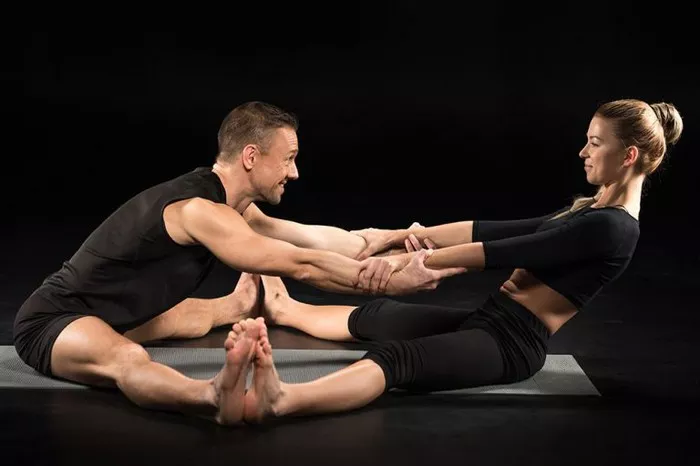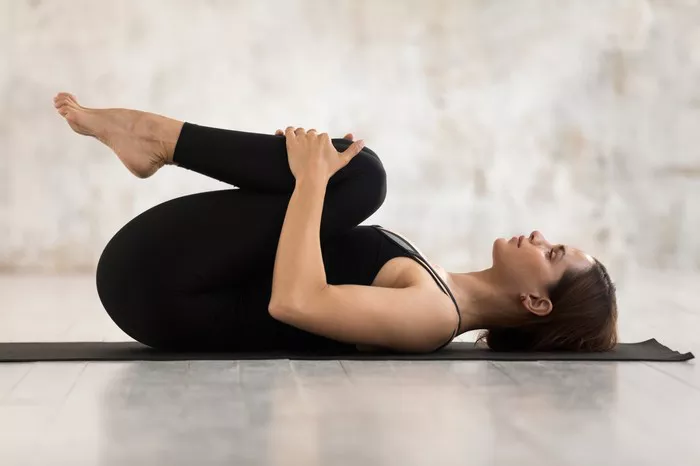Hatha Yoga stands as one of the most globally recognized and practiced forms of yoga in the modern era. In today’s fast-paced world, where stress levels are soaring and people are constantly seeking ways to improve their well-being, Hatha Yoga has emerged as a beacon of hope for millions. Its allure lies in its balanced integration of physical postures (asanas), breath control techniques (pranayama), and meditative focus. This unique combination serves as a gateway for those yearning for improved health, mental clarity, and spiritual growth. However, despite its widespread popularity and the countless lives it has touched, the exact origins of Hatha Yoga remain enshrouded in the mists of ancient Indian history, a mystery waiting to be unraveled.
Understanding Hatha Yoga: Definition and Core Principles
Before delving deep into the exploration of its origins, it is of utmost importance to clearly define what Hatha Yoga truly is. The term “Hatha” has its roots in the rich Sanskrit language. It is derived from two Sanskrit words: “Ha” , which means “sun,” representing the active, masculine energy that is full of dynamism and outward – reaching qualities. And “Tha” , which means “moon,” symbolizing the receptive, feminine energy that is more introspective and nurturing. Thus, at its very essence, Hatha Yoga signifies the union of these polar opposites. It is about finding a harmonious balance between strength and flexibility, between the effort one puts in and the ability to surrender and let go.
The primary components of Hatha Yoga are multi – faceted. Asanas, or physical postures, are carefully designed to strengthen and purify the body. Each asana, from the simple Tadasana (Mountain Pose) to the more complex Ardha Chandrasana (Half Moon Pose), works on different muscle groups, improves flexibility, and aligns the body. Pranayama, the breath control techniques, is not just about regulating the breath but about harnessing and controlling the life force, known as prana. This life force is believed to flow through the body, and proper pranayama techniques can enhance its flow, leading to increased vitality. Mudras, the symbolic hand or body positions, play a crucial role in channeling energy.
For example, the Anjali Mudra, with the palms pressed together at the heart center, is a gesture of respect and also helps in focusing the mind and energy. Bandhas, the internal muscular contractions, are used to direct the pranic flow within the body. They are like internal locks that help in conserving and guiding this vital energy. Meditation and relaxation techniques are the crown jewels of Hatha Yoga. These practices are aimed at calming the mind, stilling the incessant chatter, and achieving a state of inner stillness. In this state, one can gain deeper insights into oneself and the world around.
The Historical Roots of Hatha Yoga
Pre – Classical Yoga: The Vedic and Upanishadic Influence
The earliest glimmers of yogic practices can be traced back to the Vedic texts, which date back to 1500–500 BCE. The Rigveda, one of the most ancient of these texts, makes passing references to ascetic practices and meditation. However, these were not yet the organized and structured forms that we now know as Hatha Yoga. These early practices were more in the realm of spiritual musings and simple contemplative acts.
Later, during the period of the Upanishads (800–200 BCE), significant concepts were introduced that would lay the groundwork for physical and energetic practices. Concepts like prana (life force) and dhyana (meditation) became more prominent. The Katha Upanishad, for instance, describes yoga as a profound means to control the senses. It teaches that by taming the senses, one can break free from the cycle of distractions and move towards self – realization. This understanding of yoga as a path to self – knowledge was a crucial stepping – stone in the development of more elaborate yogic practices.
The Emergence of Tantra and the Influence on Hatha Yoga
Between 500–1300 CE, Tantric traditions flourished across India. This was a revolutionary period in the history of yoga. Unlike the earlier ascetic practices that often shunned the physical body as a hindrance to spiritual progress, Tantra took a different approach. It embraced the body as a powerful tool for spiritual awakening. This led to the development of several significant practices.
Kundalini Yoga, which focuses on awakening the dormant energy at the base of the spine, became a cornerstone of Tantric – influenced yogic practices. This energy, often depicted as a coiled serpent, is believed to hold great spiritual power.
When awakened and guided through the energy channels (nadis) of the body, it can lead to profound spiritual experiences. The Natha Tradition, a sect of yogis, played a pivotal role in this era. They took the existing practices and systematized them. They developed physical and energetic practices that were more structured and accessible. This period was truly a turning point because it shifted the focus of yoga from being purely a meditative pursuit to one that incorporated bodily techniques. This shift was essential in setting the stage for the emergence of Hatha Yoga.
The Formalization of Hatha Yoga: Key Texts and Timeline
The Goraksha Samhita (10th–11th Century CE)
One of the earliest texts associated with Hatha Yoga is the Goraksha Samhita, attributed to Gorakhnath, a highly revered yogi of the Natha tradition. This text is a treasure trove of early Hatha Yoga knowledge. It introduces key asanas that are still an integral part of modern Hatha Yoga practice. Siddhasana (perfect pose) and Padmasana (lotus pose) are two such asanas. These poses not only help in physical stability but also in mental concentration. The Goraksha Samhita also delves into breathwork techniques. These techniques are aimed at purifying the nadis, the energy channels through which prana flows. Additionally, it elaborates on mudras and bandhas, providing detailed instructions on how to control prana. The existence of this text suggests that Hatha Yoga began to take a more defined shape between the 10th and 11th centuries.
The Hatha Yoga Pradipika (15th Century CE)
The most authoritative and comprehensive text on Hatha Yoga is the Hatha Yoga Pradipika, written by Swami Svatmarama in the 15th century. This text is like a blueprint for Hatha Yoga. It systematically outlines 15 primary asanas, which, while fewer compared to the hundreds in modern yoga, formed the foundation of the practice. It also details 8 types of pranayama, including the well – known Nadi Shodhana (alternate nostril breathing) and Kapalabhati (skull – shining breath). These pranayama techniques are not only beneficial for physical health but also for mental clarity.
Later Texts: Gheranda Samhita & Shiva Samhita (17th–18th Century CE)
Two other significant texts further refined and expanded upon Hatha Yoga. The Gheranda Samhita describes 32 asanas and places a strong emphasis on cleansing techniques, known as Shatkarmas. These cleansing techniques, such as Neti (nasal cleansing) and Dhauti (abdominal cleansing), are believed to purify the body from within, preparing it for more advanced yogic practices. The Shiva Samhita, on the other hand, blends Hatha Yoga with Advaita Vedanta philosophy. It highlights the importance of meditation within the context of Hatha Yoga, showing how physical and energetic practices can lead to a deeper understanding of the self and the ultimate reality. These works solidified Hatha Yoga’s structure, ensuring its seamless transmission through generations.
The Purpose of Hatha Yoga: Beyond Physical Exercise
In modern times, many practitioners unfortunately view Hatha Yoga as merely a form of exercise, a means to get fit or tone the body. However, its original intent was far more profound. According to traditional teachings, Hatha Yoga serves as a preparatory practice for Raja Yoga, which is often referred to as the “royal path” of meditation as outlined by Patanjali. It is a stepping – stone on the journey to higher spiritual states. Hatha Yoga is also seen as a means to purify the body and mind.
By purifying the body through asanas, pranayama, and cleansing techniques, and the mind through meditation, one can reach higher spiritual states, such as samadhi, a state of deep absorption and union with the divine. Additionally, it is a way to balance the energies of the ida and pingala nadis, which are two of the main energy channels in the body. When these energies are balanced, it is believed to awaken the Kundalini energy, leading to spiritual transformation. This starkly contrasts with today’s predominantly fitness – oriented approach, highlighting the significant evolution that Hatha Yoga has undergone.
Conclusion
While elements of Hatha Yoga can be traced back to ancient times, it truly crystallized as a formal system between the 10th and 15th centuries. This was made possible by the dedicated efforts of the Natha yogis and the creation of key texts like the Hatha Yoga Pradipika. Its development was a slow and gradual process, influenced by a rich tapestry of Vedic, Tantric, and ascetic traditions. Understanding its origins is not just an academic exercise but a way for modern practitioners to truly appreciate Hatha Yoga. It helps them see Hatha Yoga not just as a physical discipline but as a profound spiritual science that is designed for holistic transformation. By delving into its roots, practitioners can connect more deeply with the essence of Hatha Yoga and unlock its full potential for their physical, mental, and spiritual well – being.
Related Topics





















